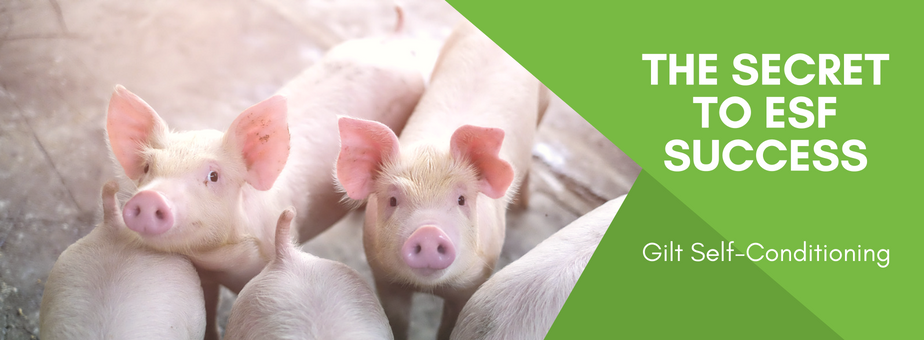
We have to say it... we don't love the phrase gilt training—if only because it is so misunderstood within the ESF world. When we talk about gilt "training", we are referring to channeling the gilt's innate curiosity into learning a task.
Self-conditioning gilts by gradually exposing them to elements of ESF from a very early stage puts less pressure on the pigs and staff, and allows the animals to learn the system naturally and calmly. But self-conditioning animals and giving them time to adjust isn't just the secret to ESF success, it is the foundation of good animal husbandry. Learn more about how we accomplish it below.
A Real Life Example
For those of you with toddlers, the task of potty training is often dreaded. Some child behavior experts say you should make the process quick and get them through it in a few days. Trial by fire, if you will. You may have accidents, crying, and stress, but it will be over quickly.
Other experts take the child-led model where you expose them to the elements of potty training before they are actually ready to train. You might get out the potty chair when they are only 18 months old, set it in the bathroom, and let them try sitting on it with no pressure to actually perform. Children in this scenario generally train very quickly, and often almost on their own, once the concept clicks in their brain.
Gilt pre-training works like the second option. Gilts are allowed to spend time around the various ESF elements while in the GDU and in pre-training, and as a result they get used to the system before being asked to use it their actual feeding needs.
Gilt Development Units, Conditioning, and Pre-Training
Some barn managers resist the idea of pre-training initially, thinking that a dedicated area sacrifices too much barn space and adds an unnecessary step to the training process. Space is certainly a consideration, but if you adjust the flow of your barn, moving gilts into the GDU at a younger age, you'll find that the space allocation was worth the sacrifice in the end.
We recommend starting gilts in their GDUs as young as you can—even as young as 50 pounds! Generally when we design and consult on GDUs, we like to bring the gilts in somewhere between 8-10 weeks and start doing self-conditioning immediately with an auto-sort mechanism such as a scale. This article illustrates the way we have used scales to precondition pigs to roller-gates.
Then, four weeks prior to their ESF training, or at the age of about 150 days, we recommend beginning pre-training.
How to Set Up Pre-Training
Setting Up Roller Gates
There are several schools of thought on how to set up pre-training, but we recommend using Nedap roller gates with food on one side and water on the other. This allows the pigs' natural curiosity to lead them through the gates. But keep in mind, this isn't the first time that these gilts have seen roller gates. Ideally they are also being exposed to roller gates during their time in the GDU.
When to Move to ESF Training
As the gilts reach sexual maturity and enter their first estrous in the pre-training pen, or at about 150 days of age, they move to the actual ESF training pens. In many cases pre-training has shortened the time that pigs need to spend in ESF training, allowing for animals to move into the sow barns more quickly and with much less stress to the animal.
Staffing Factors to Consider During ESF Training
We all know that pigs are naturally curious animals, but sometimes it's easy to forget just how smart they are. We have found that if you keep your gilts calm, they will be motivated to figure out the ESF system with very little human intervention.
The most important factor in keeping pigs calm during ESF training, besides having previously exposed them to elements of ESF while they are still in the GDU, is to find a gilt trainer who is naturally calm and patient with the pigs. If you have someone who is trying to rush the process, it will do more harm than good.
For more information on gilt training issues straight from the mouths of producers, be sure to check out this video from our WPX group housing panel discussion.
Are you researching electronic sow feeding before you buy? Learn what the experts think! Watch more of our group housing panel discussion video by clicking below!





